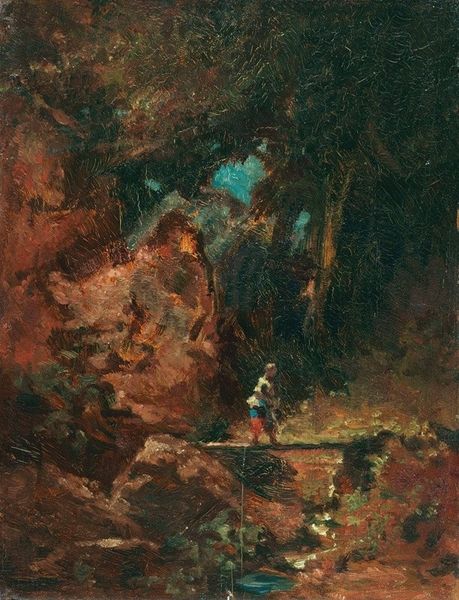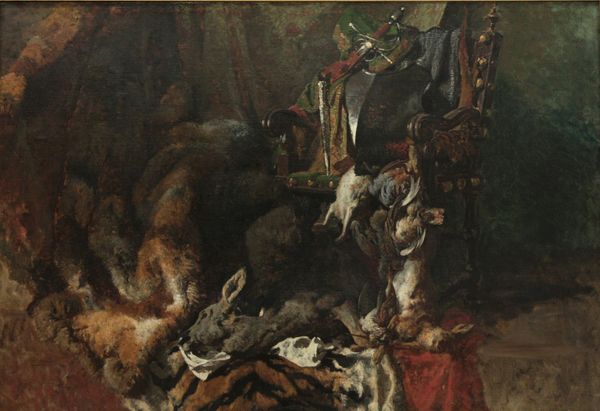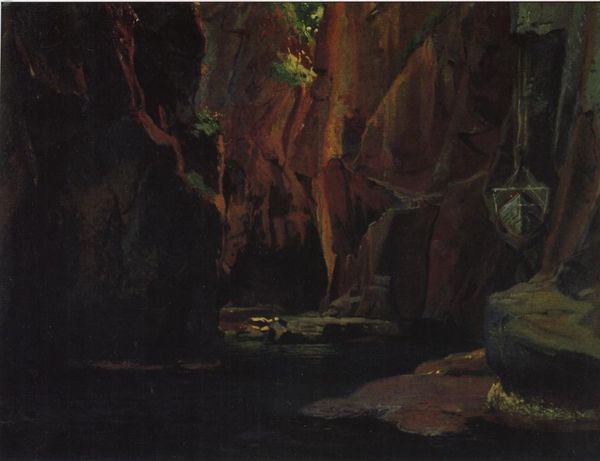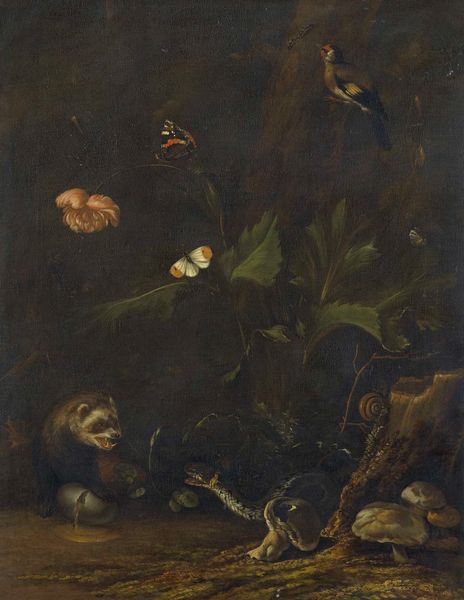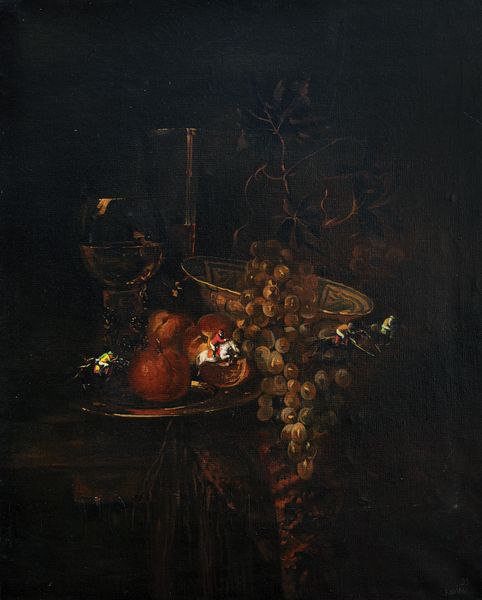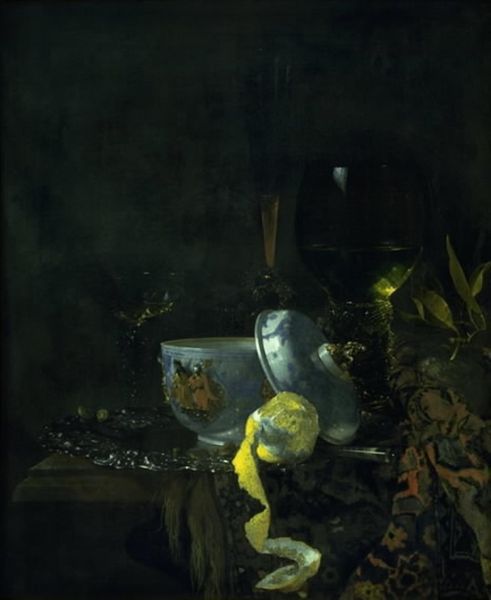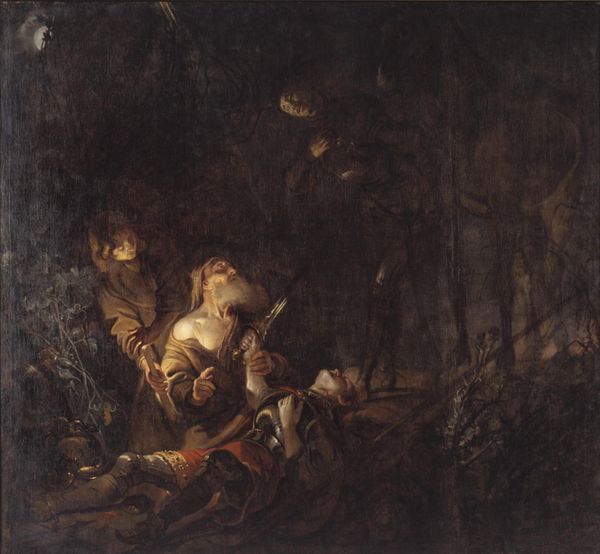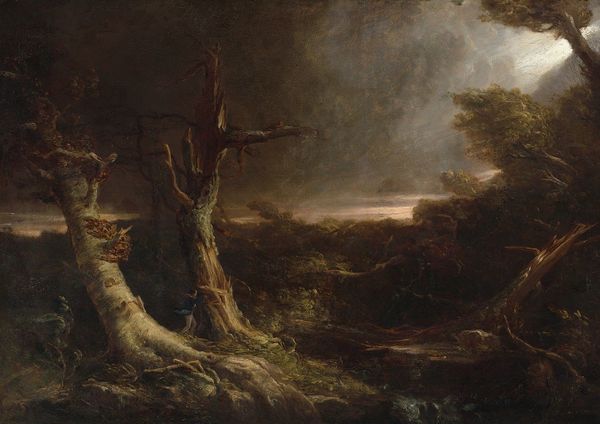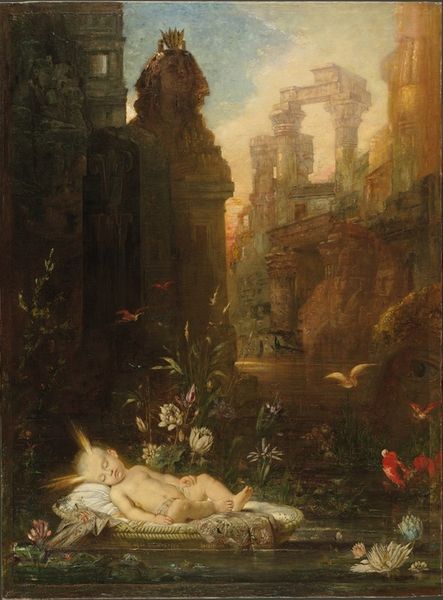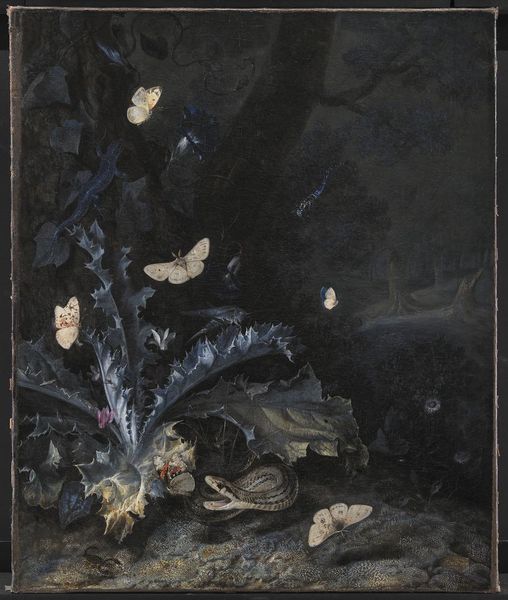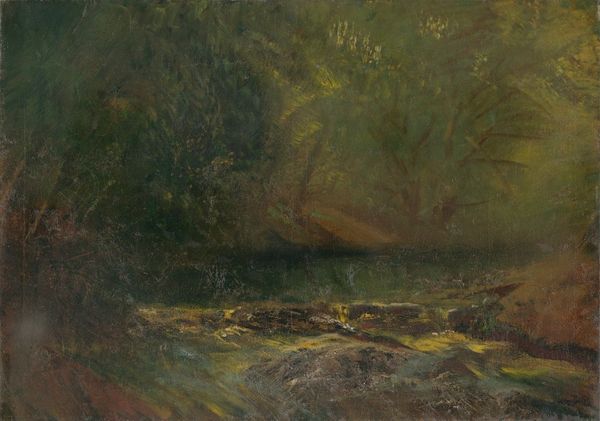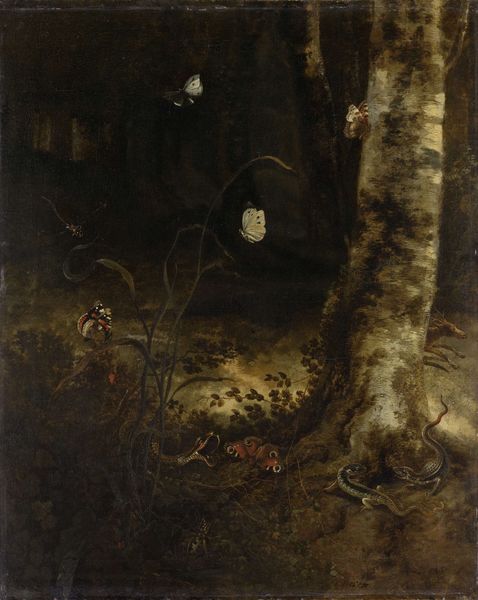
Copyright: Public Domain: Artvee
Editor: This is Hans Makart's "A Midsummer Night's Dream," painted in 1868. It’s an oil painting, and looking at it, I’m immediately struck by the darkness, but there are these pockets of light that pull you in. What do you see in this piece? Curator: Focusing purely on the internal structure of the work, consider the arrangement of light and shadow. Observe how Makart uses chiaroscuro to define forms and create a dramatic sense of depth. Note, in particular, the tension between the darker foreground and the luminosity in the upper right. How does this contrast contribute to the overall composition? Editor: Well, the light definitely draws my eye towards the back, to the forest scene, but it also makes the figures in the foreground seem hidden. I see that there is a stream or pool of water running across the very front of the image that I didn't initially see in my scan. Curator: Precisely. Examine the brushwork. What textural effects do you observe? Is the application smooth and blended, or more impastoed and expressive? Think about how this textural variety impacts your experience of the painting's materiality and your haptic sense of it. Editor: I see what you mean. There’s a real looseness to the application of paint in the foliage, creating this sense of wildness. It contrasts nicely with the smoother, more controlled strokes on the figures themselves. They almost seem to glow a bit. Curator: Indeed, consider how Makart manipulates color—his limited palette creates a specific atmosphere and draws parallels between earthly materials, and ethereal effects in light and color composition. Editor: I see what you are saying; by dissecting the artistic choices—brushwork, colour palette, etc.—one can fully grasp the essence of the work and form an insightful perspective, divorced from all historical references. Thank you for guiding me toward this understanding! Curator: It’s by stripping away the external context and truly analyzing the internal framework, we begin to really *see* an artwork and develop a visual literacy.
Comments
No comments
Be the first to comment and join the conversation on the ultimate creative platform.
